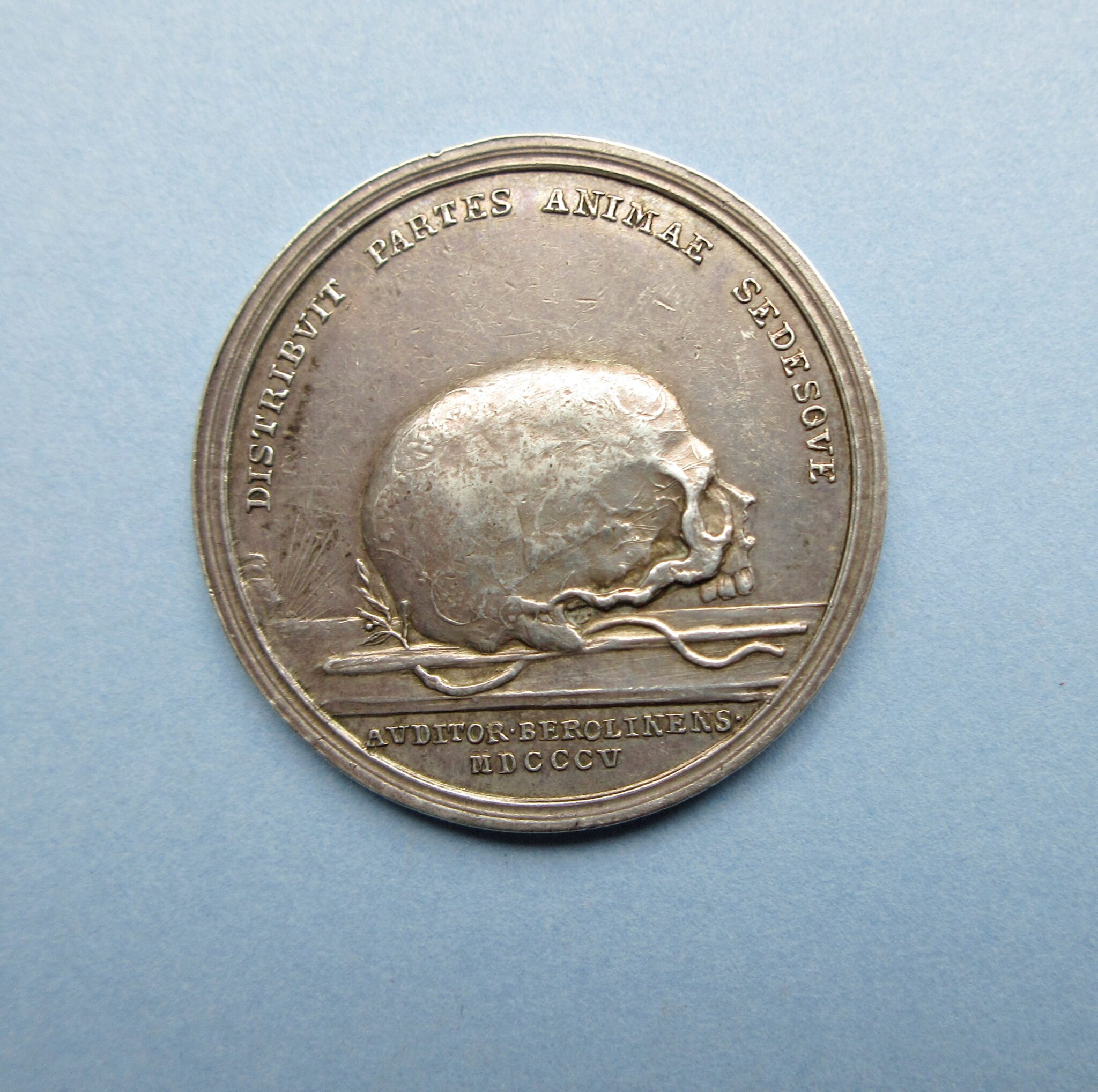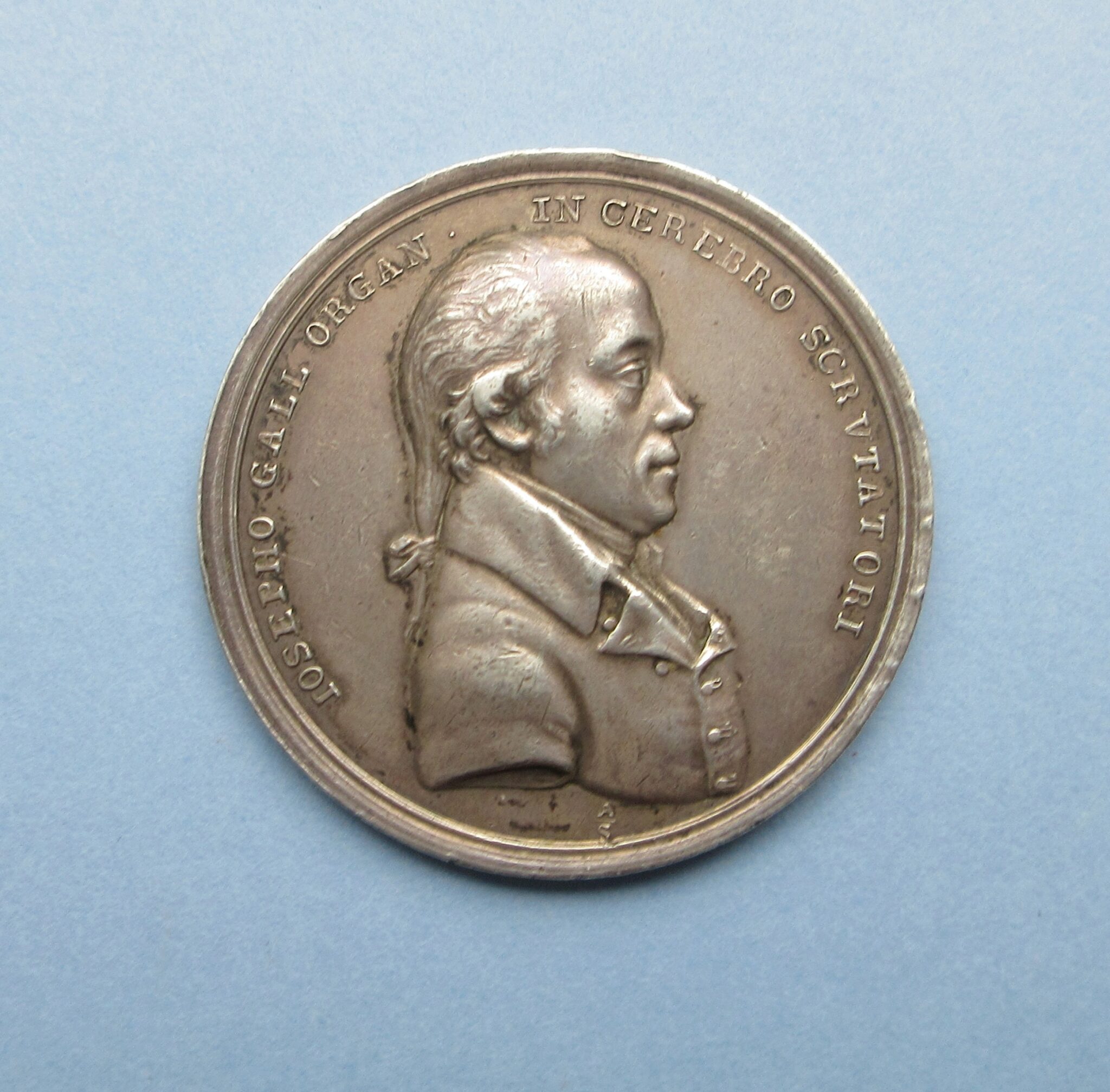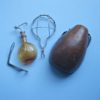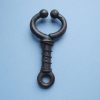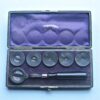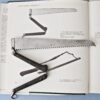Description
Issued in Berlin in 1805 , this rare silver medal celebrates the achievement of Franz Joseph Gall (1758-1828). One side with a profile bust of Gall, the other with a skull. The skull is not demarcated into the 27 faculties he “discovered”. Inscriptions in Latin : “Distribvit Partes Animae Sedesqve Auditor Berolinens 1805″ and on the other side: “Josepho Gall Organ In Cerebro Scrutatori.” Below the bust is the monogram “AR”, presumably the initials of the sculpture who created the medal. Struck early in his career, it indicates that Gall was recognized as an important student of brain function prior to the publication of his major work with Spurzheim, beginning in 1810. The date 1805 is the year he embarked on an extensive lecture tour of European cities, during which he also visited prison and asylums.
Harvard’s Countway Library notes on their site:
“A controversial figure even in his own lifetime, Viennese physician Franz Joseph Gall (1758-1828) may properly be considered the father of phrenology, although Gall himself never used that term, and phrenology as we think of it was far removed from Gall’s work on the brain and nervous system. As early as the 1790s, Gall was developing theories on the anatomy and function of the parts of the brain. In 1805, with a student and follower, J. G. Spurzheim, Gall embarked on a long lecture tour of Europe, visiting prisons and asylums as well. After settling in Paris in 1807, he began his major work on cerebral function. In 1810 the first volume of Anatomie et Physiologie du Système Nerveux appeared—one of the first and still impressive accounts of the structure and dissection of the human brain. It and the successive volume were written in conjunction with his assistant, Johann Gaspar Spurzheim.
Franz Joseph Gall came to believe that the anatomy and structure of the brain influenced and, indeed, molded the shape of the skull and, conversely, a study of the skull could reveal information about the size and structure of the brain. Based on his studies in cerebral anatomy, he then went on to isolate twenty-seven innate human faculties, corresponding to areas or “organs” of the brain, and maintained that the size and development of the cerebral area would imply a greater or lesser disposition of each trait or faculty, and direct examination of the skull could provide information about the nature of the faculty in the brain below. Gall then associated each cerebral faculty with its relative position on the surface of the skull. These faculties included the love of one’s children, covetousness, pride, sense of place, poetic talent, and firmness of purpose.”
Ask the Dealer
Dealer information
 M and R Gordon
M and R Gordon
Michael and Roberta Gordon have been dealing in medical and dental antiques for more than four decades. They have helped build a number of major private collections and have contributed to the holdings of many museums. They also deal in other scientific and technology related items, including calculating instruments, office machines, patent models and wine-related accessories such as corkscrews. ROBERTA GORDON IS A SKILLED RESTORER WHO CAN HELP YOU WITH ANY INSTRUMENTS AND CASES THAT NEED ATTENTION. Feel free to contact them for details at: [email protected] or 718-541-5974




